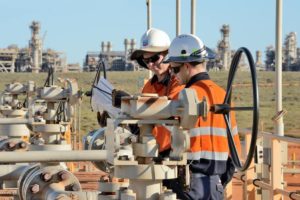The South Korean consortium that wants to turn Western Australian town Geraldton into the first of “many” green ammonia export hubs, has secured the land it needs to get the project started.
The WA government brokered a deal for the $10 billion project to use two lots at DevelopmentWA’s Narngulu Industrial Estate for a 1 million tonne per annum factory.
The state government hopes it will complement the planned hydrogen hub at Oakajee, which it’s investing in and overhauling environmental planning laws for, to the north of Geraldton.
The consortium aims to produce 200,000 tonnes of green hydrogen by 2027, and be exporting green ammonia to South Korea by 2029, says Perth-based Progressive Green Solutions (PGS) managing director James Rhee.
The timeline is “ambitious”, he told RenewEconomy, but the project has strong government backing and it has also already signed up a US partner to supply the electrolyser, which it plans to build or assemble the equipment in Geraldton.
“We have to do a lot of work to prove it’s environmentally sound, technically sound on site,” he says.
“But the state government is very strongly supportive, which is why they exclusively dedicated land to us.
“We are also a bit different because we are not a share price driven company. This is a 100 per cent government owned utility. Their focus is how quickly we can get green ammonia to decarbonise their power.”
The next steps will be to start the initial environmental and feasibility studies, and public consultation, with a final investment decision (FID) by the end of 2025.
Rhee says if this project is successful, it will be the first of many green ammonia projects the consortium will build in Western Australia.
Seeking renewables
The project was first mooted in November last year, when PGS signed a memorandum of understanding (MoU) with Korea Midland Power (KOMIPO), part of the state-owned Korea Electric Company. Samsung C&T is now also a partner.
The original MoU was to develop 3-4 gigawatts of large scale wind and solar over two sites in the Pilbara and near Geraldton, and called the project “Western Giga Energy”.
Rhee says PGS is currently looking at three sites for the renewable energy it will need to power the facility.
It’s locked in 450,000 hectares of pastoral leasehold land, but there are also two wind farm developers on the coast which want to sell power into the new factory.
Investing early for decarbonisation
South Korea views green hydrogen, transported as ammonia, as a key ingredient for decarbonising its economy. It proposes to use green ammonia in its coal fired power plants, among other uses.
The country signed a deal with Origin in 2021 to supply green ammonia from its yet-to-be-built Bell Bay plant in Tasmania.
A feasibility study has been done for that 500 megawatt, 420,000 tonne per annum project, and Origin says it wants to make a decision on whether to go ahead with a Front End Engineering Design (FEED) this year.
Three South Korean conglomerates with Queensland-based Ark Energy have signed up to a $20 billion hydrogen and ammonia project, with a goal of 1 million tonnes of exports by 2032, and this year French power company Engie and POSCO signed a deal to build 1.2 million tonnes per annum green ammonia project in Oman in 2027.










